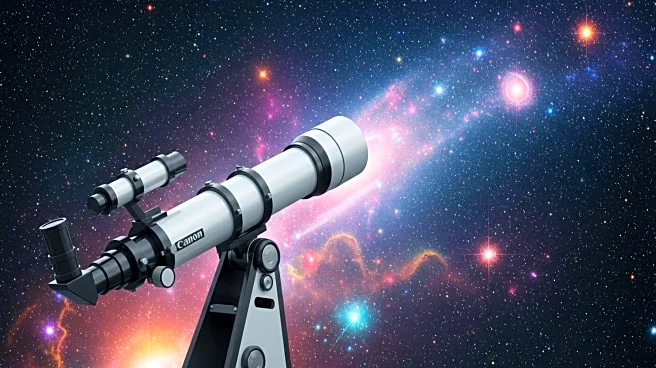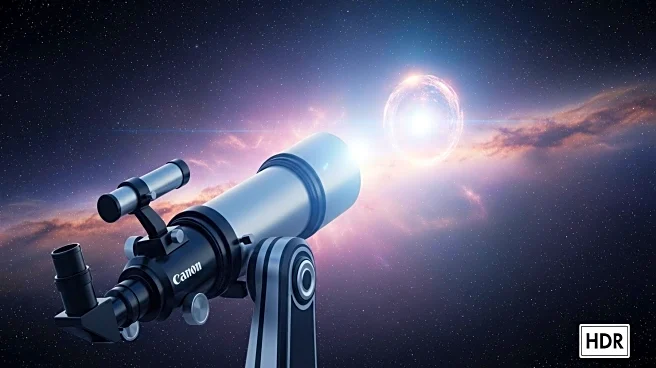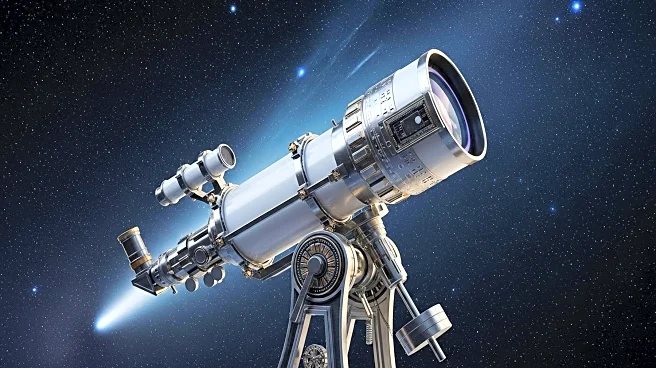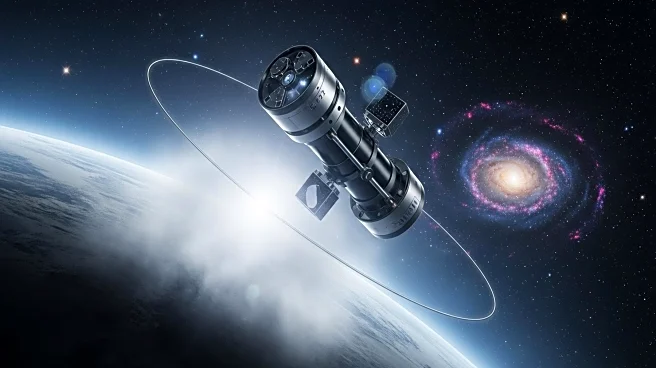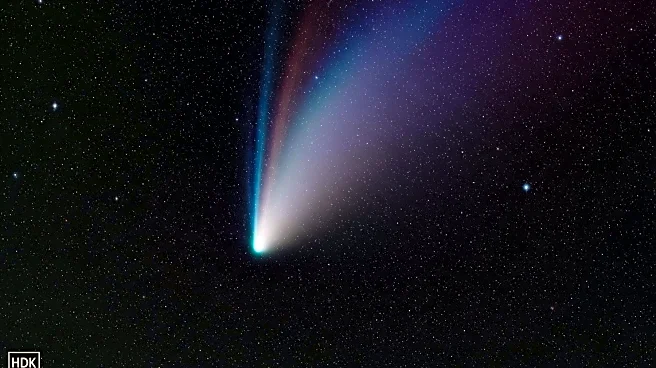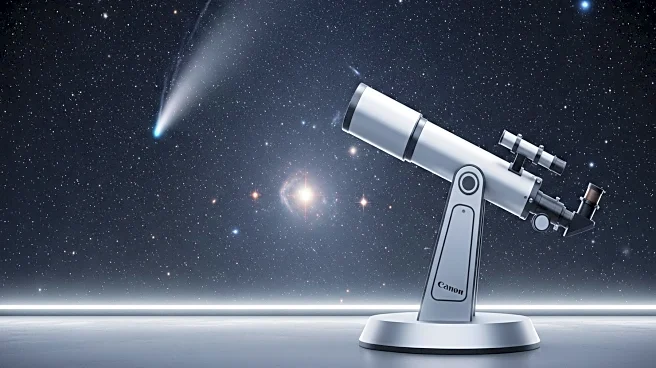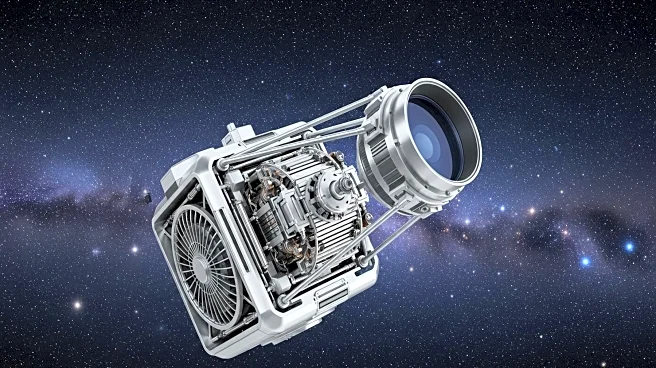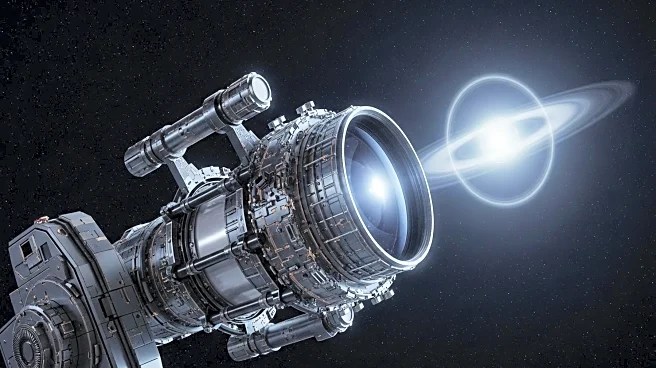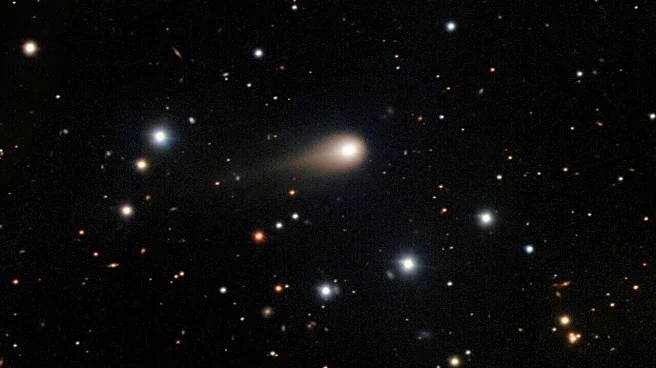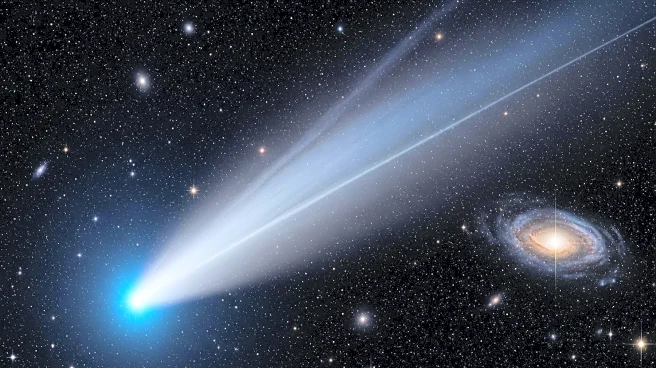What's Happening?
A mysterious interstellar object, designated 3I/ATLAS, has captured the attention of scientists after being observed by four powerful telescopes, including NASA's Hubble and the James Webb Space Telescope. Initially detected in early July, the object is believed to be a comet, but exhibits unusual characteristics that challenge this classification. Observations reveal a high carbon dioxide to water ratio in its coma, the highest ever recorded for a comet. Additionally, the object was active at a distance from the Sun where most comets remain inactive. The object lacks a distinct cometary tail, further adding to its mystery. Researchers are considering various hypotheses about its origins, including exposure to high radiation levels or formation near the CO2 ice line in its parent protoplanetary disk.
Why It's Important?
The study of 3I/ATLAS is significant as it provides a rare opportunity to understand interstellar objects, which are seldom observed. The object's unique characteristics could offer insights into the formation and composition of celestial bodies beyond our solar system. This research may also enhance our understanding of cometary behavior and the conditions in distant planetary systems. The findings could have implications for future space exploration and the search for extraterrestrial life, as they challenge existing models of cometary activity and composition.
What's Next?
As 3I/ATLAS continues its journey through the solar system, it will pass close to Mars, Venus, and Jupiter. Scientists, including Harvard astronomer Avi Loeb, suggest that NASA's Mars Reconnaissance Orbiter and Juno probe could provide further observations. These close encounters may yield additional data to help unravel the object's mysteries. The scientific community eagerly awaits peer-reviewed analyses of the current findings, which could refine or redefine our understanding of interstellar objects.
